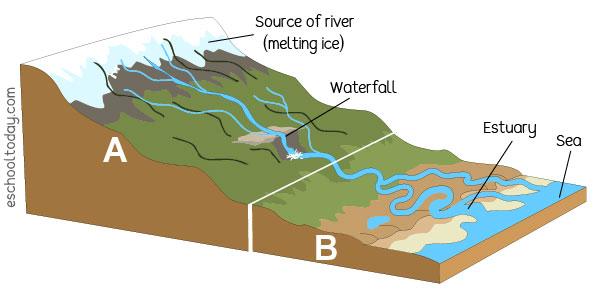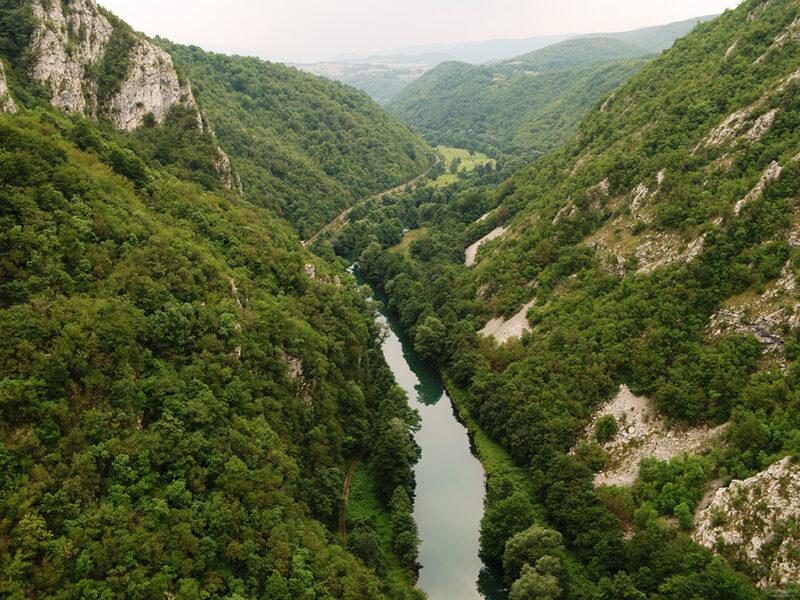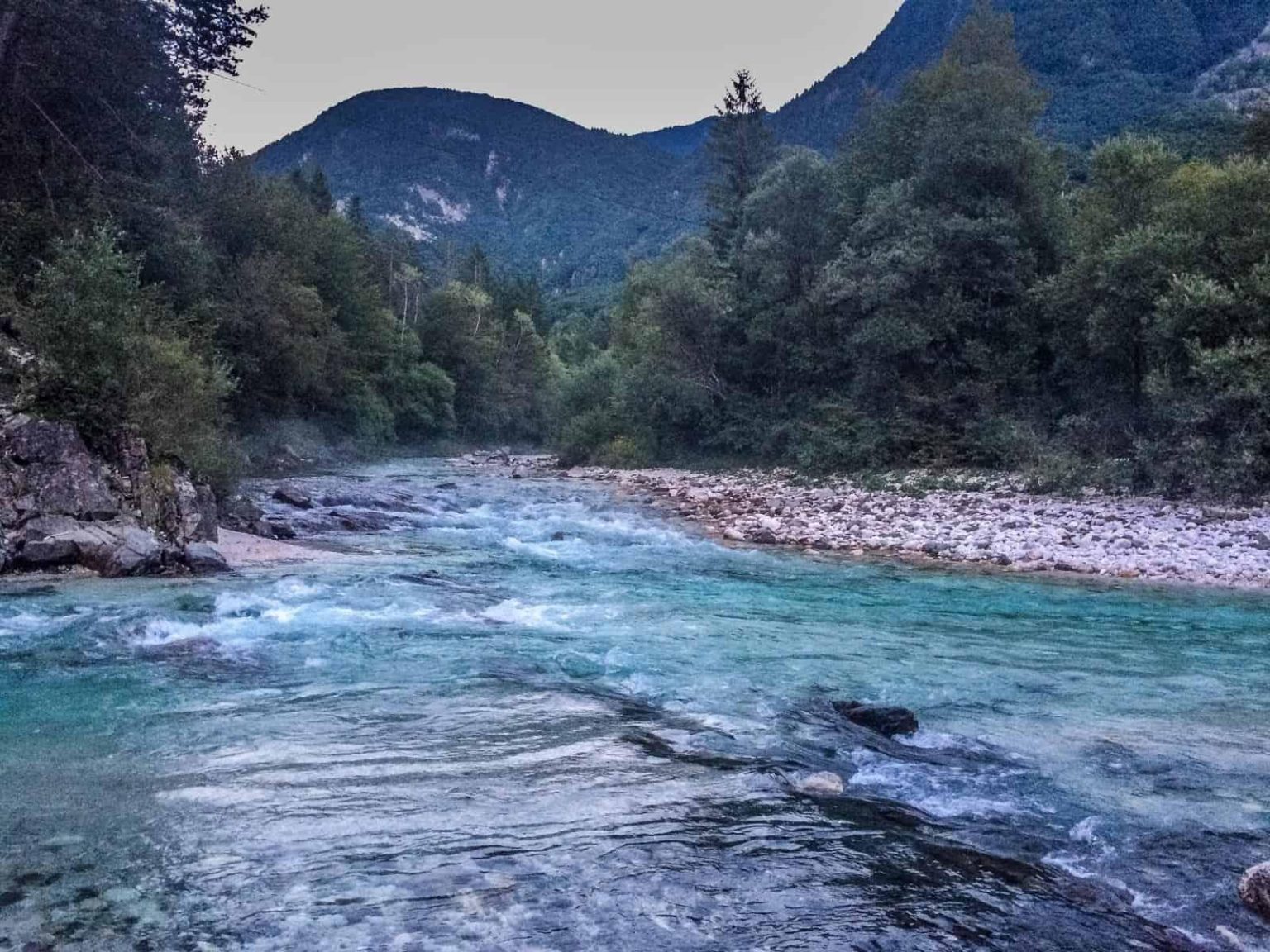In the quiet embrace of dawn, as the sun spills its golden hues across the horizon, the rivers come alive, weaving their way through valleys and mountains like nature’s own brushstrokes on a sprawling canvas. These flowing waterways, often taken for granted, are the architects of our terrestrial world, tirelessly carving and reshaping the landscapes they traverse. From the majestic canyons of the Colorado to the winding tributaries of the Amazon, rivers possess an extraordinary ability to sculpt the earth, transforming rough terrains into breathtaking vistas. This article delves into the intricate relationship between rivers and the land, exploring how this dynamic interplay not only shapes physical geography but also influences ecosystems, cultures, and human history. Join us on a journey to uncover the secrets behind nature’s fluid artistry, where the gentle rush of water becomes a powerful force of creation and change.
Table of Contents
- The Dance of Erosion and Deposition in Riverine Landscapes
- Understanding the Role of River Valleys in Shaping Ecosystems
- Human Interaction with Rivers: Balancing Preservation and Development
- Enhancing River Health: Strategies for Sustainable Management and Conservation
- In Conclusion
The Dance of Erosion and Deposition in Riverine Landscapes

The interplay of erosion and deposition forms a dynamic narrative that unfolds across riverine landscapes. As rivers carve their paths through solid rock and soil, they meticulously sculpt their surroundings, creating a tapestry of features that narrate their journey. Erosion occurs when water’s relentless force breaks down materials from riverbanks and riverbeds, leading to the formation of steep cliffs and meandering bends. This process is governed by factors such as water speed, debris composition, and geological structure, allowing rivers to shape their environments with a unique artistry that varies from one region to another.
In contrast, deposition captures the essence of a river’s creative pause, as it lays down materials transported from upstream. When a river’s velocity decreases, it relinquishes its sediment load, resulting in the formation of features like sandbars, delicate islands, and expansive floodplains. This deposition process is influenced by numerous factors including water flow patterns, sediment size, and riverbanks’ topography. A clearer understanding of these elements reveals the subtle balance between movement and stillness, showcasing how rivers continuously reshape the landscape through their enchanting dance.
| Feature | Erosion | Deposition |
|---|---|---|
| Characteristics | Shapes landforms, and creates steep banks | Builds new landforms, like deltas and bars |
| Driving Force | Velocity of water flow | Decrease in velocity |
| Influencing Factors | Material composition and geology | Flow patterns and sediment size |
Understanding the Role of River Valleys in Shaping Ecosystems

River valleys are not merely the physical landscapes shaped by flowing water; they serve as vibrant corridors of biodiversity, facilitating the growth of complex ecosystems. Within these valleys, a delicate balance of flora and fauna thrives, supported by the unique conditions created by the river’s ebb and flow. This dynamic environment is characterized by rich sediments, varied moisture levels, and microclimates, which collectively enrich the soil and create habitats for a multitude of species. As rivers carve through landscapes, they also create niches for plants and animals that depend on the specific conditions found only in these areas. The interconnectedness of the river’s ecosystem allows for a diversity of life forms, from aquatic organisms to terrestrial wildlife that relies on the river for sustenance and breeding grounds.
Moreover, the role of river valleys extends beyond mere ecological diversity; they are crucial in maintaining water quality and regulating local climates. Through a natural process known as floodplain dynamics, these regions act as buffers during periods of heavy rainfall, absorbing excess water and reducing the risk of downstream flooding. Additionally, the vegetation within river valleys plays a key role in filtering pollutants, ultimately enhancing water quality as it flows downstream. This table summarizes some of the essential roles of river valleys in ecosystem health:
| Role | Description |
|---|---|
| Habitat Creation | Provides diverse ecosystems for various species. |
| Water Filtration | Filters pollutants to enhance water quality. |
| Flood Regulation | Absorbs excess water during heavy rainfall. |
| Nutrient Cycling | Promotes organic matter decomposition and nutrient replenishment. |
Human Interaction with Rivers: Balancing Preservation and Development
Rivers are not merely veins of water coursing through the earth; they are dynamic entities that shape geographies, cultures, and economies. The intricate dance of water, sediment, and time creates a landscape rich with diversity and vitality. As civilizations flourish along their banks, rivers become integral to our existence, offering resources and recreational opportunities. However, the allure of urban expansion and industrial growth often pressures these ecosystems, generating a challenging tug-of-war between progress and preservation.
To navigate this delicate balance, it is essential to embrace a multifaceted approach that harmonizes human activity with ecological integrity. Key strategies include:
- Community Engagement: Involving local populations in conservation efforts to raise awareness and foster stewardship.
- Regulatory Frameworks: Implementing policies that prioritize sustainable development and protect water quality.
- Restoration Projects: Investing in riverbank restoration and habitat rehabilitation to rejuvenate damaged ecosystems.
Through collaborative efforts, we can ensure that rivers continue to enhance our landscapes and nurture both people and nature alike.
Enhancing River Health: Strategies for Sustainable Management and Conservation
To ensure the longevity of our rivers and the ecosystems they support, implementing effective conservation strategies is paramount. These strategies encompass a combination of restoration projects, community engagement, and sustainable practices that enable both nature and humanity to thrive. Key approaches include:
- Riparian Buffer Restoration: Replanting native vegetation along riverbanks to improve water quality and reduce erosion.
- Pollution Control Measures: Employing green infrastructure like bioswales and rain gardens to filter runoff before it reaches water bodies.
- Wildlife Habitat Enhancement: Creating protected areas that allow for the natural migration of aquatic species and the development of diverse habitats.
Moreover, fostering local stewardship can amplify the effectiveness of conservation efforts. Educating communities about the importance of rivers encourages active participation in their preservation. Collaborative initiatives between governmental organizations, non-profits, and local residents can lead to the implementation of innovative solutions, such as:
- Volunteer River Clean-Up Events: Mobilizing community members to physically engage with their waterways while promoting awareness.
- Citizen Science Programs: Involving the public in data collection to monitor river health and provide vital information for research.
- Workshops and Educational Programs: Offering resources and knowledge to help communities understand their role in river stewardship.
| Strategy | Benefit |
|---|---|
| Riparian Buffer Restoration | Improves biodiversity and water filtration |
| Pollution Control Measures | Reduces hazardous runoff |
| Wildlife Habitat Enhancement | Supports species migration |
In Conclusion
As we draw the curtains on our journey through the fluid artistry of rivers, we are reminded that these meandering bodies of water are more than mere conduits of nourishment and travel. They possess a profound ability to shape not only the physical landscape but also our understanding of nature’s delicate balance. Each bend, each bank, tells a story etched in sediment and stone, revealing the intricate choreography of erosion and deposition that has played out over millennia.
In contemplating the rivers that wind through valleys and mountains, we appreciate the dynamic interplay between water and earth—an ever-evolving masterpiece crafted by time and the elements. As we protect and celebrate these vital waterways, we also embrace the lessons they offer: resilience, adaptability, and the beauty of change. Ultimately, rivers remind us that nature is not static, but a vibrant tapestry, woven together with the threads of life, movement, and transformation. So, as we venture back to our own landscapes, let us carry forth this appreciation for rivers as nature’s true sculptors, tirelessly molding and inspiring the world around us.



